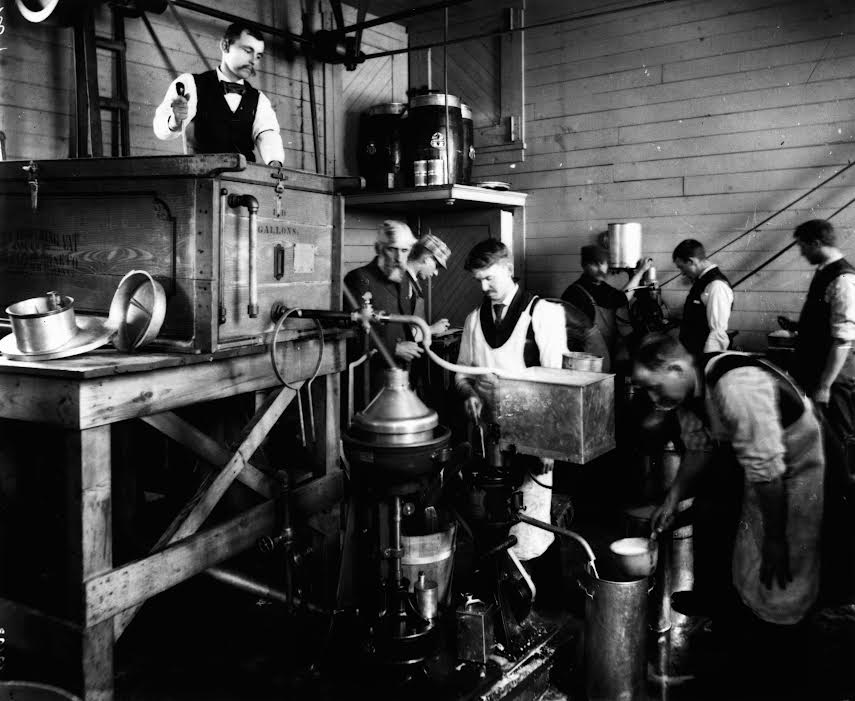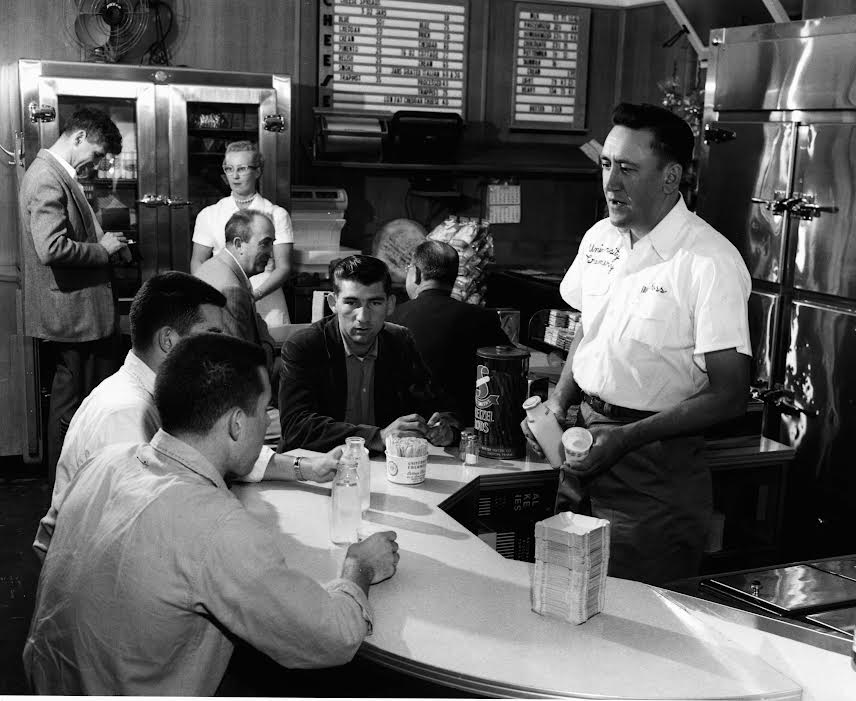Penn State’s Creamery is, next to football, perhaps the university’s most beloved institutional symbol. Its ice cream and other dairy products are legendary among alumni, students, and visitors. The ice cream short courses taught by Food Science faculty have attracted students from every continent.
The institution now known as Penn State acquired its first dairy cows around 1865. However, it was not until 1889, when a separate building for dairy research and instruction was constructed, that serious work began in instruction and research. This building, no longer standing, occupied a site northeast of Frear Laboratory on the rise that became known as “Ag Hill.”
The school’s work in dairy husbandry took some time to gain adherents among Pennsylvania dairy farmers. But by the turn of the twentieth century, the Grange and other farm groups had begun to recognize the value of Penn State’s work in agriculture and to lobby the legislature for much-needed facilities. The first new building they campaigned for was a dairy science building, later named Patterson Hall. It opened in 1904, across Curtin Road from today’s Palmer Museum of Art.

By this time, there was extensive instruction at the undergraduate level, significant research projects, and regular correspondence and winter short courses for farmers and dairy plant operators. Penn State offered the first collegiate-credit instruction in the subject in 1892 for both resident and extension students.
Philadelphia had long been known as a national center for ice cream production, and that reputation was enhanced by the national centennial celebration in 1876. After the ice cream cone was introduced at the St. Louis World’s Fair of 1904, people wanted to know how to make better ice cream. The demand for ice cream-making instruction made Penn State, the land-grant college in a dairy state, a leader in the field.
In what soon became the Department of Dairy Science, a succession of outstanding instructors and scientists kept Penn State in the forefront in milk, butter, ice cream, and other dairy products. Research explored production, marketing, economics, and health issues. Short courses were offered for farmers and the operators of small and large dairy plants.
By the 1930s, dairy science had once again outgrown its space. A new building, eventually named for department head Andrew Borland, was opened in 1932. The T-shaped structure, across Shortlidge Road from the dairy barns, was perhaps the most modern dairy science building at any land-grant college at the time.
The instructional work in dairy husbandry in the nineteenth century had always produced high-quality butter, cheese, and fluid milk that was consumed on campus. Beginning in 1902, the Creamery began to sell its milk, butter, and cheese in the State College community. Gradually the Creamery developed sales routes to deliver its products to other towns in Centre and Blair counties. In addition, the Borland Building included a second-floor sales room catering to students and campus visitors.
By the late 1950s, however, nearby commercial dairies were complaining about unfair competition, arguing that with its off-campus sales the college was operating a private business on a tax-free basis. At the same time, with Penn State enrollment exceeding 10,000 students, the Creamery was having a hard time meeting its on-campus demand. For half a century the Creamery had been buying milk and cream from local farmers to supplement what its own herds produced.

The matter was resolved when the Creamery gave up its community business and agreed to sell only to the dining halls, Nittany Lion Inn, and the Hetzel Union Building (HUB). In addition, the Creamery constructed a glass-walled sales room attached to the south side of the Borland Building, along Curtin Road directly across from the Pavilion Theatre.
For the next forty years this became the focal point of Penn Staters’ craving for Creamery ice cream. The list of potential flavors available continued to expand, with the four “Hall of Fame” flavors being introduced in these years: Cherry Quist (1981), Keeney Beany Chocolate (1985), Peachy Paterno (1987), and WPSU Coffee Break (1990).
Today, the Creamery’s list contains more than 100 flavors, with around twenty available at any given time. Cones are sold only with two scoops and flavors cannot be mixed. Famously, President Bill Clinton got an exception to mixing flavor when he visited Penn State. (He ordered Peachy Paterno and Cherry Quist.) The Creamery also produces and sells sour cream, ricotta, cream and cheddar cheeses, and milk.
In 2006, the Creamery underwent a long-needed upgrade with the opening of the Berkey Creamery, with its 3,700-square-foot sales and seating space, in the newly constructed Rodney A. Erickson Food Science Building. In addition to indoor seating, which the Borland sales room did not have, it includes outdoor seating shaded by trees along a mall stretching north to the Arboretum.
Many land-grant agricultural schools have redirected their missions from studies of food production to the broader field of food science. As a result, they have closed training and research facilities like creameries. Penn State is one of perhaps a dozen or so land-grant colleges that still operates a creamery — and it is growing, rather than shrinking like many others.
Ice cream, with an annual production level equivalent to 750,000 cones-worth, is eagerly consumed year round on campus. Packed in dry ice, it is mailed to fans in the 48 contiguous U.S. states.
Lee Stout
Sources:
Bezilla, Michael. The College of Agriculture at Penn State: A Tradition of Excellence. University Park: Penn State University Press, 1987.
Kroger, Manfred. Trends in Food Science: History at Penn State. Lancaster, PA: DEStech Publications, Inc., 2007.
Stout, Lee. Ice Cream U: The Story of the Nation’s Most Successful Collegiate Creamery. University Park: Penn State University Libraries, 2009.
First Published: September 11, 2021
Last Modified: February 22, 2023
